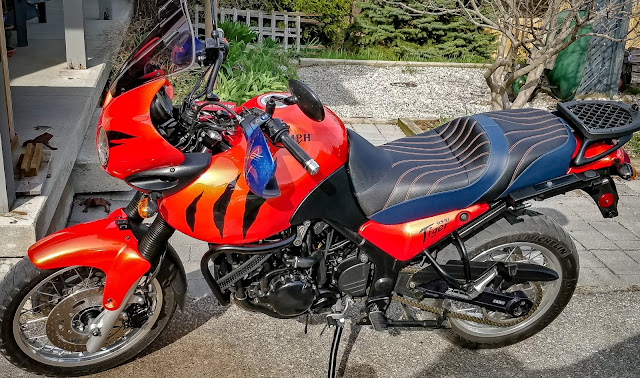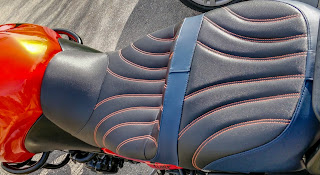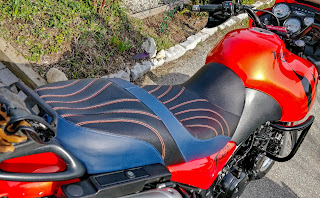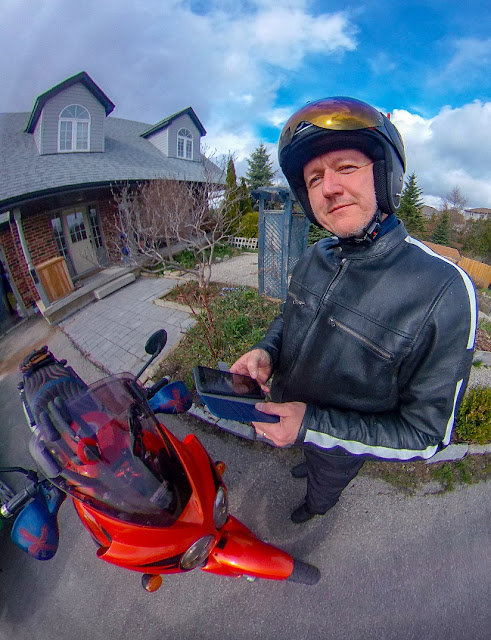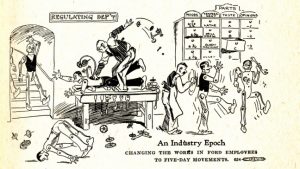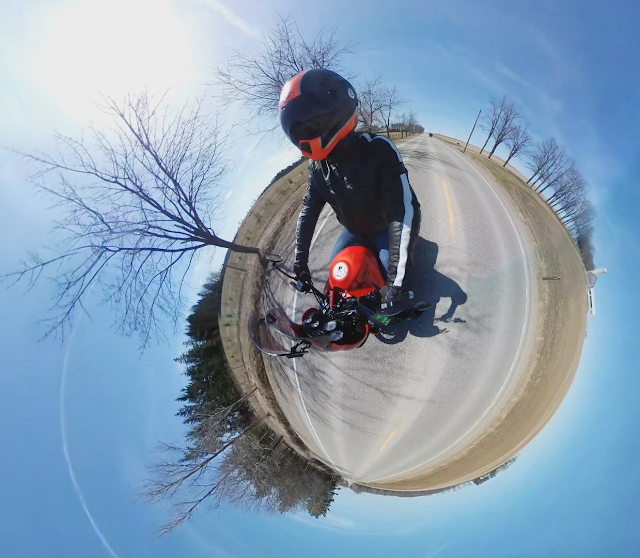I got my M2 yesterday, which means I’m off double secret probation and able to ride at night, double people and/or go on the big highways. Two hours after I got my M2 I took the bike over to my eight year old’s school and drove him home on it. It was a nice, leisurely ride through town. He hasn’t been able to talk about much else since.
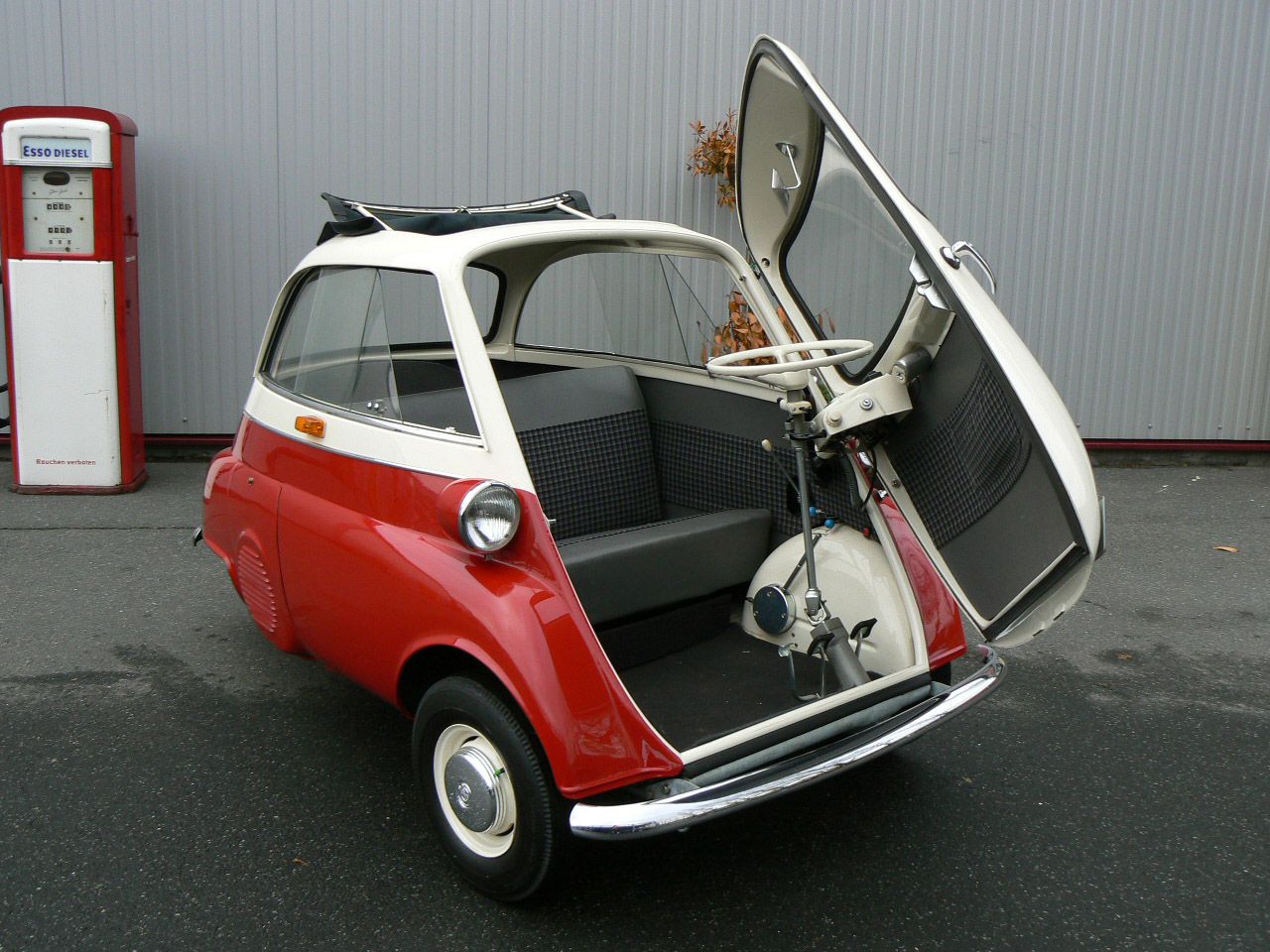 |
| Just like Nana used to drive: The Isetta 3 Wheeler |
One of our instructors at the motorbike course wasn’t a fan of taking passengers. To him it defeated the point of the whole experience; a singular, tight bond between rider and bike, and a chance to be alone with your thoughts. I think that’s an important part of biking, but I’m digging being able to share the feel of riding with my son. To that end, I’m thinking about the options available. The idea of a big touring bike doesn’t really thrill, but in the antique and adventure bike arenas there are a lot of options.
I’ve got a thing for asymmetrical vehicles. My Nana had a three wheeler when I was growing up in Norfolk. I loved that car, the door was the whole front end, and she looked so cool driving it.
| Royal Enfield Bullet Classic |
When I was a kid I also saw my share of Morgan Aeros, and the new Morgan 3 scratches that same itch. Bikes have a long tradition of three wheeling too. I’ve always thought the sidecar look was classic cool. When I discovered that one of the premier vintage side car shops (Old Vintage Cranks) is only 20 minutes away from me in Hillsburgh, I could see me getting something from them in the future.
 They also happen to be a Royal Enfield dealer, so I could get a classic look with modern parts! With that bike a sidecar is almost a necessity! OVC is the place to get that done. A Royal Enfield Bullet Classic in blue with a matching classic side car would be an awesome way to share the open feel of riding with my family.
They also happen to be a Royal Enfield dealer, so I could get a classic look with modern parts! With that bike a sidecar is almost a necessity! OVC is the place to get that done. A Royal Enfield Bullet Classic in blue with a matching classic side car would be an awesome way to share the open feel of riding with my family.
I think there will always be a place in the stable for a two wheeler, but it’s nice to have a not crazy-expensive option like the RE Bullet and sidecar sitting there waiting for a tear down the road. Cool chrome riding goggles and classic leather gear would be the accessory of choice.
At the moment I’m finding the Ninja to be a great first bike. It’s athletic, sounds wonderful and is always rearing to go. With my son on the back I feel the weight, especially on the shocks. Something with longer suspension travel, like that KLR I originally considered, would also allow for a better two person ride. A KLR with luggage means I’m less worried about him flying off too, something the twitchy Ninja seems eager to do.
Now that I can do pretty much everything you can do on a bike on the road, the perfect bike isn’t one bike. I’d eventually want an enduro that can go anywhere, a road specialist, and something odd-ball, like that classic bike and sidecar combo. At the moment my dream stable is a Triumph Tiger 800 adventure bike, a Triumph Street Triple naked road bike and that whacky classic with sidecar. Being able to open the garage and see those three sitting there would mean all options are on the table… and the three together still cost less than a new mid-sized SUV.
 |
| Triumph Street Triple |
 |
| Triumph Tiger 800 |









